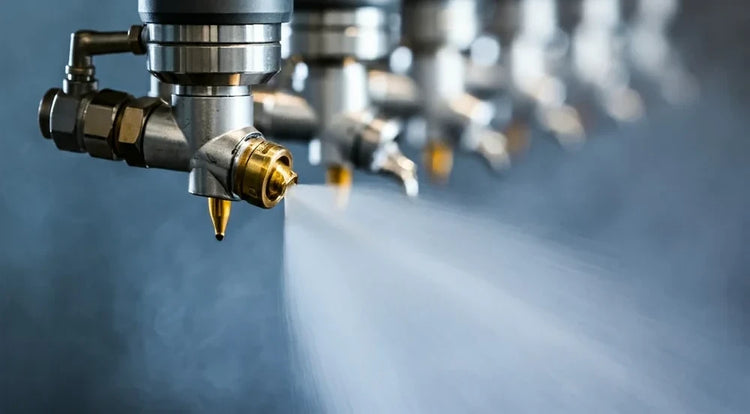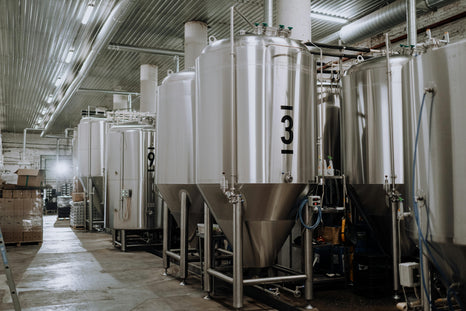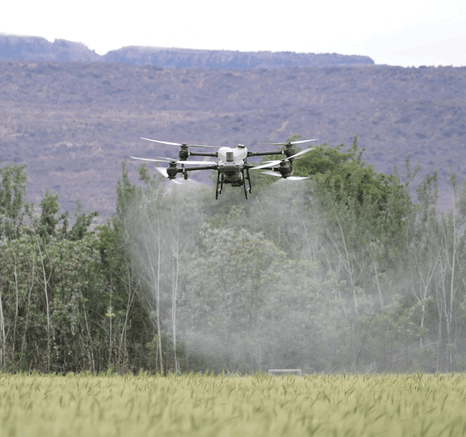Washing your car can be a satisfying chore, especially when you get that perfect, streak-free shine. But sometimes, it feels like you're just pushing dirt around, or worse, you're worried about scratching the paint. The secret weapon in your car cleaning arsenal? The right car wash spray nozzles. These little attachments can make a huge difference in how effectively and safely you clean your ride. Let's break down what you need to know to pick the best ones for a truly sparkling finish.
Key Takeaways
- When using car wash spray nozzles, the 40-degree white nozzle is generally the safest and most effective for the main body of your car, offering a good balance of cleaning power and gentleness.
- Avoid the 0-degree red and 15-degree yellow nozzles for car washing, as their concentrated spray can easily damage paint, trim, or even dent panels.
- The black soap nozzle (often 65 degrees) is specifically designed to apply soap or foam at a lower pressure, which is ideal for covering your vehicle evenly before rinsing.
- Proper use involves pre-rinsing with a wider fan nozzle, applying soap/foam with the appropriate nozzle, and then rinsing thoroughly from top to bottom, maintaining a consistent distance.
- Regular maintenance, like flushing and proper storage of your car wash spray nozzles, is important to prevent clogs and ensure they last longer, giving you consistent cleaning results.
Understanding Car Wash Spray Nozzle Angles
When you're looking to get your car sparkling clean, the type of spray nozzle you use on your pressure washer really matters. It's not just about blasting dirt away; it's about doing it safely and effectively. The angle of the spray from your car wash spray nozzles dictates how concentrated the water stream is, and that directly impacts how well it cleans and whether it might cause damage.
The Purpose of Different Nozzle Angles
Different spray angles are designed for different jobs. Think of it like having a set of tools – you wouldn't use a hammer to screw in a screw. The same applies here. The angle determines the width of the spray pattern and the intensity of the water hitting the surface. A narrow angle, like a 0-degree or 15-degree nozzle, shoots water in a tight, powerful stream. This is great for blasting stubborn grime off concrete or brick. On the other hand, wider angles, like those found on a 40-degree or 65-degree nozzle, spread the water out over a larger area, reducing the pressure on any single spot.
Why Narrow Angles Damage Car Paint
Using a narrow-angle nozzle, such as a red (0-degree) or yellow (15-degree) tip, on your car is a big no-no. These nozzles create a highly concentrated, high-pressure jet of water. This intense stream can easily chip away at your car's paint, dent body panels, or even cause scratches. It’s like trying to clean a delicate piece of fruit with a power washer – you’re going to cause damage. Even a 25-degree nozzle, while more versatile, can still be too aggressive for car paint if you're not careful. The goal is to clean, not to strip the finish.
The Benefits of Wider Spray Patterns
Wider spray patterns, typically from 40-degree and 65-degree nozzles, are your best friends when washing a car. A wide angle rinse nozzle, like the common white 40-degree nozzle, spreads the water over a much larger surface. This means the pressure is distributed, making it much gentler on your car's paint and trim. It’s still powerful enough to rinse away soap and dirt effectively, but without the risk of damage. The 65-degree nozzle, often used for applying soap or foam, provides an even wider, softer spray, perfect for coating the vehicle without high impact. Some systems even use oscillating car wash spray nozzles or rotating spray heads for car wash applications to provide a broad, even cleaning action.
Selecting the Ideal Nozzle for Vehicle Cleaning
When you're looking to get your car looking its best, picking the right spray nozzle for your pressure washer is a big deal. It's not just about blasting dirt away; it's about doing it safely. Using the wrong nozzle can actually do more harm than good, leaving you with scratches or even chipped paint. Let's break down which ones are your best friends for car cleaning.
The White 40-Degree Nozzle: A Safe Choice
For most car washing tasks, the white 40-degree nozzle is your go-to. This nozzle creates a wide fan pattern. Think of it like a gentle shower rather than a laser beam. This broad spray spreads the water's force over a larger area, which is much kinder to your car's paint. It's effective enough to wash away dirt and grime without concentrating the pressure too much in one spot. This significantly lowers the risk of damaging delicate automotive finishes.
When to Consider a Yellow 15-Degree Nozzle
The yellow 15-degree nozzle is a bit more aggressive. It has a narrower spray pattern than the white one, meaning the water is more concentrated. While it can be useful for tougher jobs on very durable surfaces, it's generally too strong for regular car washing. You might consider it for cleaning stubborn road grime on the lower parts of the car or perhaps for a solid stream nozzle for wheels if they have really caked-on brake dust, but you have to be extremely careful. Always keep a good distance and move it constantly to avoid etching the metal or damaging any coatings.
The Role of the Black Soap Nozzle
Before you even start rinsing, you'll want to apply soap or foam. That's where the black nozzle, often a 65-degree tip, comes in. This nozzle is designed to work with your pressure washer's soap dispenser or a foam cannon. It applies the cleaning solution at a much lower pressure. This allows the soap to cling to the car's surface, breaking down dirt and lubricate the paint for a safer wash. It's all about getting that thick, even coat of foam that lifts contaminants away from the surface before you even touch it with a wash mitt.
Maximizing Foam Application with Car Wash Spray Nozzles
Getting that thick, clinging foam is what many people want when they're washing their cars. It's not just for looks; that foam actually helps lift dirt and grime off your vehicle's surface before you even touch it with a wash mitt. This means less chance of scratching your paint, which is a big deal for anyone who cares about their car's finish.
Achieving Thick, Clinging Foam
So, how do you get that really good foam? It mostly comes down to the type of car wash foam nozzle you're using and how you set it up. Professional-grade foam cannons, often paired with pressure washers, are designed to mix air, water, and soap in a way that creates a dense, bubbly blanket. The quality of the soap you use also plays a role, but the nozzle is key to getting the right consistency.
- Use a dedicated foam cannon or a high-quality foaming spray nozzle. These are built to create thick foam, unlike basic sprayers.
- Ensure proper water pressure. Most foam cannons work best with a certain PSI range, usually from a pressure washer.
- Experiment with your soap-to-water ratio. Too much water and you get thin foam; too little and it might not spread well.
Adjusting Foam Consistency for Different Needs
Not every wash needs the same kind of foam. Sometimes you want a really thick, almost shaving cream-like foam to tackle heavy dirt, like after a muddy off-road trip. Other times, a lighter, more watery foam is fine for a routine wash. Many good foaming spray nozzles have adjustable settings for this. You can usually tweak a dial or a nozzle tip to change how much air and soap gets mixed in, giving you control over the foam's thickness and how it sprays out.
|
Setting |
Foam Thickness |
Best For |
|
Thin |
Lighter |
Routine washes, light dust |
|
Medium |
Moderate |
General cleaning, light grime |
|
Thick |
Dense |
Heavy dirt, mud, pre-soaking |
Foam Cannons and Their Impact on Cleaning
Foam cannons really change the game for car washing. They turn a simple soap application into a more effective pre-wash step. By letting the foam sit on the car for a few minutes, it has time to break down and loosen dirt. This makes the actual washing process much safer for your paint. It’s like giving your car a gentle soak before you even start scrubbing. This pre-soak action is a big reason why many detailers swear by foam cannons for achieving that truly spotless finish without the risk of swirls or scratches.
Essential Techniques for Using Car Wash Spray Nozzles
Using the right car wash spray nozzles is key to getting that showroom shine without causing any damage. It’s not just about blasting dirt away; it’s about a controlled, effective cleaning process. Let's walk through how to use your nozzles properly.
Pre-Rinsing with the Correct Nozzle
Before you even think about soap, you need to get rid of loose debris. This is where your wider angle nozzles come into play. Start with the white 40-degree nozzle for an initial rinse. This provides a broad fan pattern that lifts away dirt, dust, and grit without concentrating pressure on any single spot. Think of it as a gentle sweep to prepare the surface. Keep the nozzle about 12-18 inches away from the car’s surface and work from the top down. This prevents dirty water from running over areas you haven’t cleaned yet.
Applying Soap and Foam Effectively
Once the car is pre-rinsed, it’s time for soap. This is where the black soap nozzle shines. Its wider spray pattern and lower pressure are designed to apply detergent or foam evenly across the vehicle. Attach the black nozzle, or better yet, use a foam cannon with it, and coat the car from the bottom up. This method helps the soap cling and work its way through the grime. Let the soap dwell for a few minutes – just long enough to break down dirt, but not so long that it dries on the surface. If you’re using a foam cannon, you can adjust the mixture to get a thicker, more clinging foam, which is great for lifting stubborn dirt.
Rinsing for a Spotless Finish
After the soap has done its job, it’s time to rinse. Switch back to your white 40-degree nozzle. Again, work from the top of the vehicle downwards. Overlap your passes slightly to ensure no soap residue is left behind. Pay attention to panel gaps, trim, and around lights where soap can hide. If you encounter any particularly stubborn spots, you might consider a yellow 15-degree nozzle, but use it with extreme caution and from a greater distance. The goal is to remove all traces of soap and loosened dirt for a truly spotless finish. For areas like wheels or lower body panels that might have heavier grime, a green 25-degree nozzle can offer a bit more power, but always maintain a safe distance.
Here’s a quick guide to nozzle selection for different stages:
|
Stage |
Recommended Nozzle |
Angle |
Purpose |
|
Pre-Rinse |
White |
40° |
Remove loose dirt, gentle coverage |
|
Soap/Foam |
Black |
65° |
Apply detergent/foam at low pressure |
|
Final Rinse |
White |
40° |
Thoroughly remove soap and grime |
|
Stubborn Dirt |
Yellow (Cautious) |
15° |
Targeted cleaning, use with care |
|
Wheels/Undercar |
Green (Optional) |
25° |
More power for heavy grime, maintain distance |
Remember, using quick connect car wash nozzles makes switching between these much faster. Always ensure your pressure washer is compatible with the nozzles you choose, and consider precision car wash spray nozzles if you need more control for specific tasks. Even low flow rinse nozzles can be useful for a final, gentle rinse to conserve water and prevent overspray.
Maintaining Your Car Wash Spray Nozzles
Keeping your car wash spray nozzles in good shape is pretty important if you want them to work well and last a long time. It’s not super complicated, but you do need to pay a little attention to them after you use them. Think of it like taking care of any tool; a little care goes a long way.
Flushing Nozzles After Each Use
After you finish washing a car, there’s usually some soap or dirt left inside the nozzles. If you don’t get that out, it can dry up and clog things, which is a real pain. The best way to handle this is to just run some clean water through your pressure washer for a minute or two after you’re done with the soap. This flushes out any leftover gunk. If you notice a nozzle seems blocked, you might need to use a thin wire or a special nozzle cleaner to clear it out, then rinse again.
Proper Storage for Longevity
Where you keep your nozzles matters. You want to store them somewhere clean and dry. A small case or a holder that keeps them organized and protected is a good idea. This stops them from getting damaged or corroded. Some people like to put a little silicone lubricant on the metal parts, especially on things like stainless steel car wash nozzles or brass car wash nozzles, to help prevent rust and make them easier to attach next time. This is especially true for specialized undercarriage spray nozzles that might get more exposure to water and dirt.
Identifying and Replacing Worn Nozzles
It’s a good idea to check your nozzles now and then. Look for any signs of wear and tear, like cracks or if the spray pattern looks weird. If a nozzle seems damaged or worn out, it’s best to swap it for a new one. Using a worn-out nozzle can mean your cleaning isn’t as effective, and it might even cause problems with how the water hits the car. For tasks that require specific chemical handling, making sure your chemical resistant car wash nozzles are in top condition is key to safety and performance. Following these car wash nozzle maintenance tips will help keep your equipment working right.
Choosing the Right Car Wash Spray Nozzle for Your Needs
When you're looking to get that perfect shine on your vehicle, picking the right spray nozzle for your pressure washer or foam cannon is a big deal. It's not just about blasting dirt away; it's about doing it safely and effectively. Think of it like using the right tool for a job – you wouldn't use a hammer to screw in a lightbulb, right? The same goes for car washing. Getting this wrong can mean chipped paint or swirl marks, and nobody wants that.
Considering Foam Thickness and Pressure
The kind of foam you want to apply really changes which nozzle you'll reach for. If you're aiming for that thick, clinging foam that lifts dirt and lubricates the surface, you'll want a nozzle that works well with a foam cannon. These often use a specific nozzle, usually black, designed for low-pressure soap application. The goal here is to create a rich lather, not a high-pressure blast. On the other hand, if you're just rinsing or doing a general wash, you'll be looking at different nozzle angles.
- Thick Foam: Aim for a black soap nozzle (around 65 degrees) with a foam cannon. This helps create that luxurious, dirt-lifting foam.
- General Cleaning/Rinsing: A white 40-degree nozzle is your go-to for a safe, wide spray pattern.
- Tougher Grime (Use with Caution): A green 25-degree nozzle might be used for wheels or undercarriages, but always keep it at a safe distance from paint.
Pressure Washer Compatibility
Not all nozzles work with all pressure washers, and that's important to remember. Most pressure washers use a standard quick-connect system for their nozzles, but it's always good to double-check. You'll also want to make sure your pressure washer's PSI (pounds per square inch) is in the right range for car washing. Generally, staying between 1,300 and 1,900 PSI is recommended. Anything much higher can start to damage your car's paintwork, even with the right nozzle.
The PSI rating of your pressure washer is a major factor. Too high, and you risk damaging your vehicle's finish, no matter how wide the spray angle. Always check your pressure washer's specifications and consider using a unit with adjustable PSI or a nozzle that allows for controlled pressure.
Durability and Ease of Use
When you're picking out nozzles for your commercial car wash nozzle system, you want things that will last and are easy to swap out. Most nozzles are made from brass or stainless steel, which are pretty durable. You'll find that the color-coding system is pretty standard across different brands, making it easy to grab the right one. For example, the white 40-degree nozzle is almost universally recognized as the safest for car exteriors. If you're looking for the best spray nozzles for car wash operations, consider how easy they are to clean and store, too. A nozzle that clogs easily or is a pain to put away isn't going to make your life any easier.
- Material: Look for brass or stainless steel for better durability.
- Compatibility: Ensure the nozzle fits your pressure washer's quick-connect fitting.
- Ease of Cleaning: Some nozzles are easier to flush out than others, which is a plus for maintenance.
Wrapping Up Your Nozzle Choice
So, picking the right spray nozzle for washing your car really comes down to a few key things. You want something that cleans well but doesn't end up damaging your paint. For most car washing jobs, the white 40-degree nozzle is your go-to. It gives you a good spray pattern that's safe for your car's finish. And don't forget the black soap nozzle; it's perfect for getting that soap or foam onto the car evenly before you rinse. Just remember to steer clear of the red or yellow ones – they're just too intense for car paint and can cause problems. By sticking with the right nozzles and keeping your pressure at a safe level, you'll get that clean car look without any worries. Happy washing!
NozzlePro: Your Car Wash Partner
Finding the perfect car wash nozzles can be overwhelming. That's where NozzlePro comes in. Our extensive selection of high-quality nozzles, coupled with expert guidance, ensures you find the ideal spray solutions to elevate your operations. Contact us today and let's transform your car wash!
Do you have nozzle frustrations in your car wash? Share your challenges in the comments!












